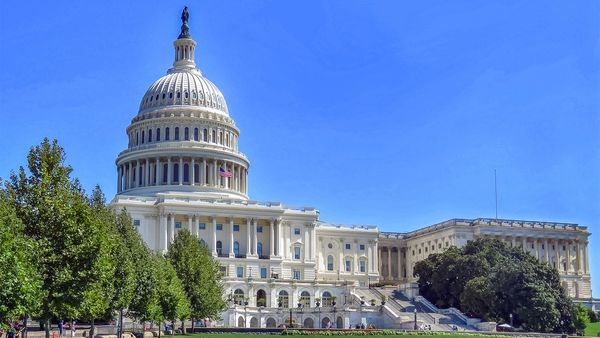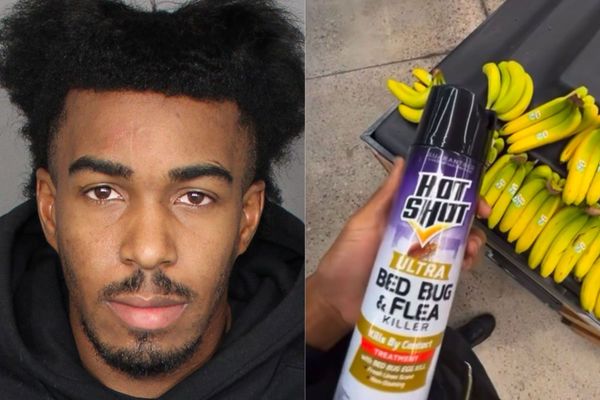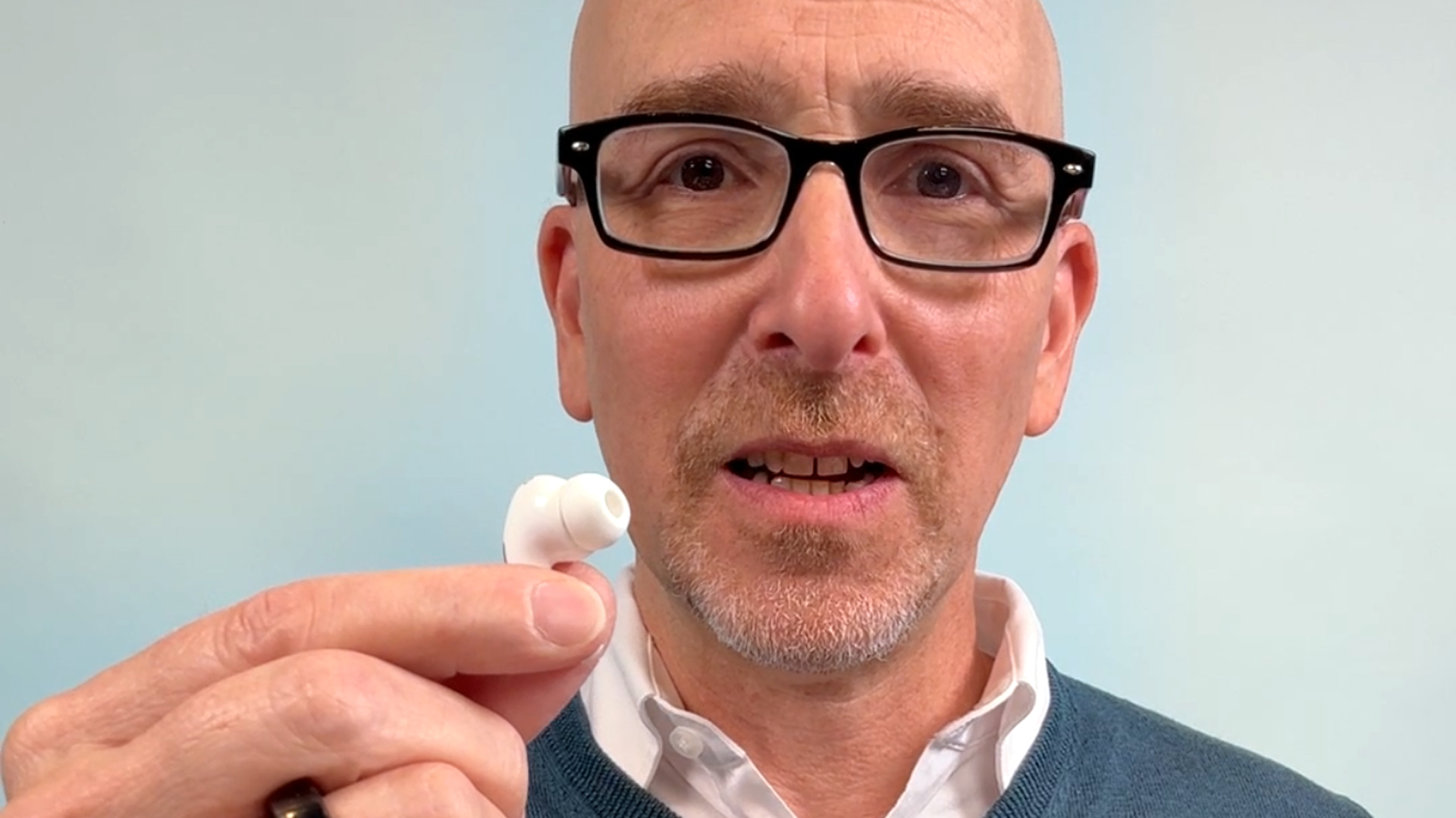
It's been forty or more years since I took a real audio test, but I still remember being a kid, wearing bulky headphones, and raising my hand when I heard a tone. Back then, I had perfect hearing. I wondered what Apple's new clinical-grade, over-the-counter hearing test would be like, especially when enabled through its tiny Apple AirPods Pro 2 Bluetooth earbuds.
It was not without trepidation that I undertook this test. Studies show that more than a third of the people in my age range typically suffer a 25decible (dB) or greater hearing loss. My family has been complaining for years that I have terrible hearing. I argue it's "tunnel hearing," meaning I hear what I'm focused on and tend to shut out everything else. My concern was that Apple's Hearing Test would prove that I have, perhaps, significant hearing loss.
If there could be a silver lining in that potential news, it's that the same AirPods Pro 2 headphones I was using to run the test could now act as an over-the-counter grade hearing aid. In other words, I could hide my possible hearing loss behind a pair of very useful AirPods and let people assume I'm listening to my favorite podcast.
Back in September, Apple walked me through the basic hearing test process, but it was not a real test. It was brief; the results were canned and did not apply to my hearing.
Apple's real AirPods Pro 2 hearing test is somewhat more involved and longer. If you're planning to try it, you'll need an iPhone running at least iOS 18.1 and a pair of AirPods Pro 2 running the latest firmware. Even though the new AirPods 4 provide some active noise cancellation, they do not have the necessary seal to conduct this test.
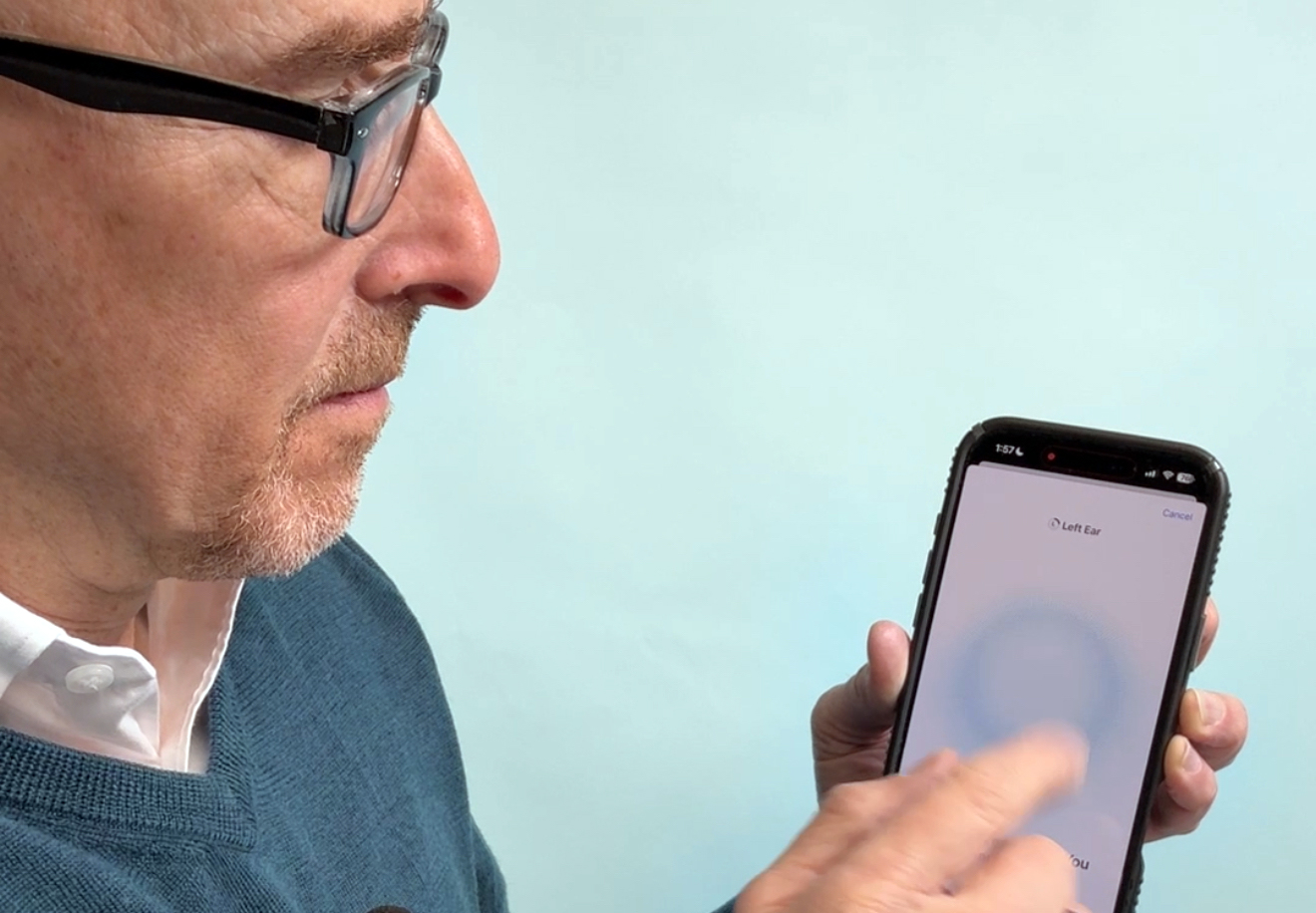
The seal turns out to be a critical part of the process, and Apple's hearing test, which you can find in the Health app under Browse / Hearing, starts by ensuring you have the best AirPods Pro 2 fit. The system instructs you to put the buds in, make sure they're well-seated, and then listen to a brief bit of music.
In my case, the seal was good, but if it's not, you'll want to swap your silicone tips for a different size to ensure they fit neatly in your ears and close off any outside audio leakage. There are also some questions to answer, like if you're 18 or older (by quite a bit, thank you very much), are currently experiencing any allergies, a cold, or sinus infections (miraculously, no), and if you've been to a loud concert or at a loud construction site in the last 24 hours (do I look like the kind of person who goes to loud concerts in the middle of the week...or ever?).
The next step is the test, which instructs you to find a quiet place without much external noise (easier said than done in a busy office, but I used our video studio), and it automatically sets the phone to Do Not Disturb to reduce disruptions.
Now hear this
Much like the audio tests of my childhood, Apple's hearing test uses a series of tones played to one ear and then to the other. Instead of raising my hand, I tapped the screen, which recognized the taps with a circular, vibrating graphic.
Each ear test runs for at least three minutes. These, my friends, were some of the most difficult six minutes I can remember in a long time. The tones range from clear and robust to high and extremely faint. As each test wore on, I became increasingly tense. Did I hear a tone? Oh, wait, there was no tone, and I tapped. I don't hear anything!
I was convinced that I was, or at least my eardrums were, failing miserably. If you watch my TikTok of the test, you can see the grim expression on my face. I was worried.
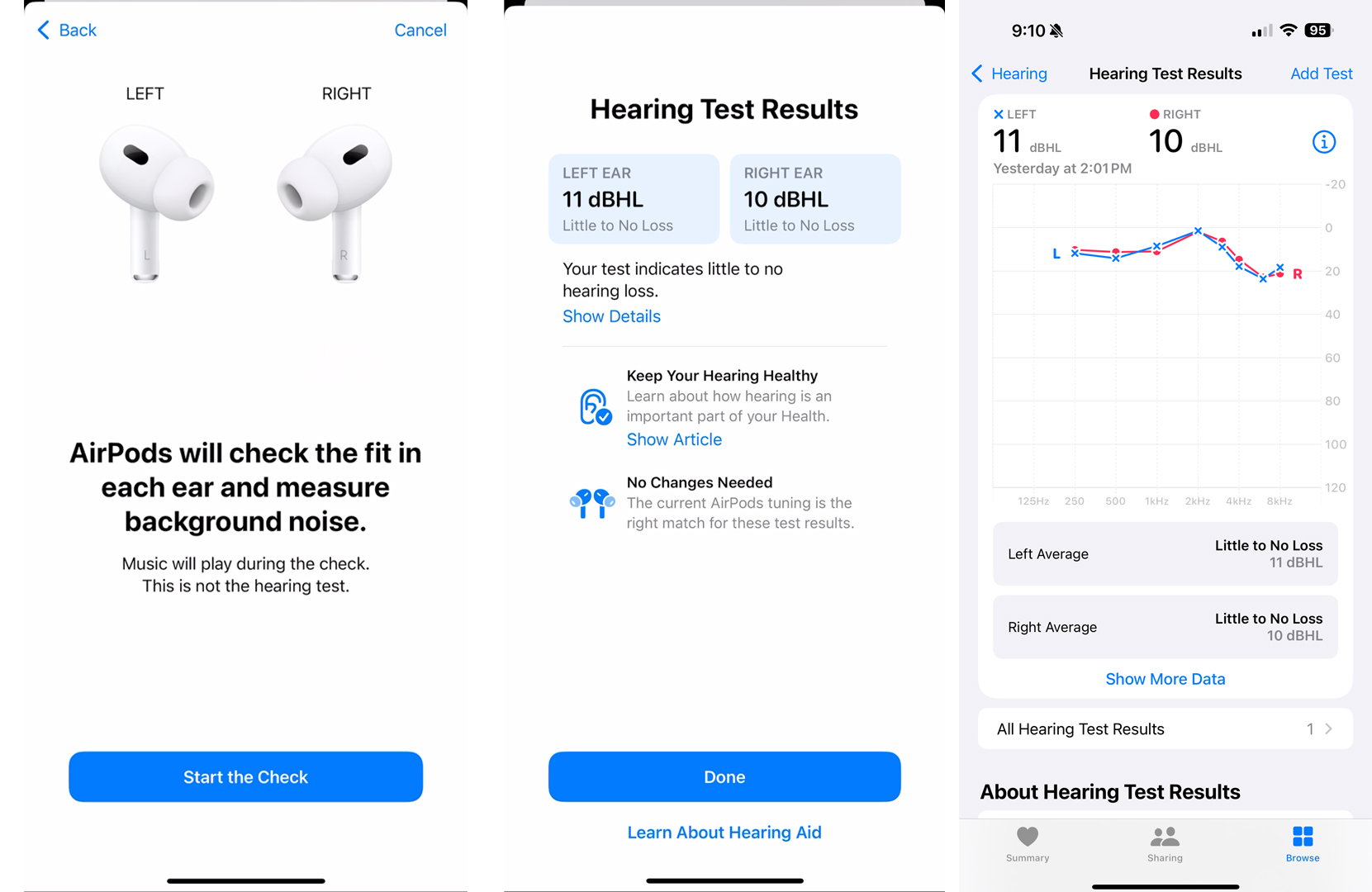
Once the test is complete, the results are almost instantaneous. I saw a pair of numbers – 11 dbHL and 10 dbHL – one for my right ear and one for my left. At first, I couldn't comprehend what they meant. But then I noticed the average ratings also said for each ear, "Little to No Loss," and below that, "No Changes Needed" in my AirPods tuning. Yes, I had lost some hearing, but nothing appreciable. I was not going deaf.
I almost jumped for joy. Then, I stopped myself and realized a hard truth. I could hear fine; I was just doing a terrible job of paying attention. This, I think, might frustrate my family even more than a confirmation of hearing loss. At least if my ears are failing me, it's not my fault that I didn't hear you when you called my name six times or that you had a 30-second conversation with me that I did not hear at all. I have no excuse since my hearing is now clinically proven to be essentially sound.
So, thanks, Apple, for testing my hearing, making me feel good about the relative youth of my eardrums, and giving me a wake-up call about my obvious attention deficit. I hear this message loud and clear: I have some work to do.
@techradar ♬ original sound - TechRadar
